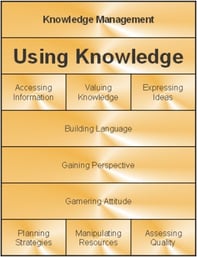Published on
Strategic Shifts: Making Online Education Work At Community Colleges

There’s this a rather profound line in the motion picture Star Trek VI: The Undiscovered Country where the president of the United Federation of Planets says, “Let us redefine progress to mean that just because we can do a thing, it does not necessarily mean we must do that thing.” The film came out in 1991 and that line has stayed with and guided me since.
The same caveat can be applied to online programs, particularly at community colleges. Online programs have left the shadows to become part of many student’ mainstream higher education experience. My own institution has been using technology to deliver distance learning to community college students since 1972. While that’s over four decades of development and delivery experience there are still very unique challenges when bringing programs online in the community college space.
While all online program development has challenges, there are a few obstacles in particular that are unique to the community college sector. Significant among these is the fundamental mission of community colleges.
At their core, community colleges are designed to provide access. This means an open-admissions policy and, in addition to general transfer courses, programs aimed at generating skills that are critical to the local workforce. These trade programs do not always translate well to online delivery. They may be enhanced through a blended format but full online delivery is either challenging or its perceived challenges cause hesitation from faculty members and industry alike.
Historically, community colleges matriculate a large percentage of their students from their geographically immediate community (though, in fairness, the reach of community colleges is becoming more global). What’s more, many of these students may not see themselves as being college-ready. A study by the Center for Community College Student Engagement showed upwards of 67 percent of entering students place into at least one developmental class.
There have been online developmental courses for some time now. It could be argued, however, developmental students may require enhanced student services such as tutoring or invasive advising to aid in successful completion. Another key variable in the success of online developmental programming is the design of the current Learning Management Systems (LMS) used at the community college. The genesis of most LMS in use today was in the delivery of course content. This means they are course-centric rather than student-centric. An evolution toward Learner Relationship Management would put students—and to this illustration those students requiring higher and more frequent touch points—at the center of the learning process.
This idea not only stands to promote holistic student success, but could prove invaluable to a community college’s financial health with an increasing number of states moving financing to completion-based funding. The catch-22 here is increased online programs may pose increased risk. A recent study by UC Davis found, of those surveyed, pass rate in online courses to be as low as 56 percent. In basic terms, schools who are completion funded could see as many as 44 percent of the students in an online section not receive full, or even any, funding.
The model for building out online programs is no longer the Field of Dreams mantra of “build it and they will come,” but now “build it and hope they complete it.”
At their genesis, community colleges were created to respond better to the changing dynamics of community needs than traditional universities. There’s no doubt they will do so again in the online space, but it’s going to take a bit of rebirth over evolution.
Author Perspective: Association



